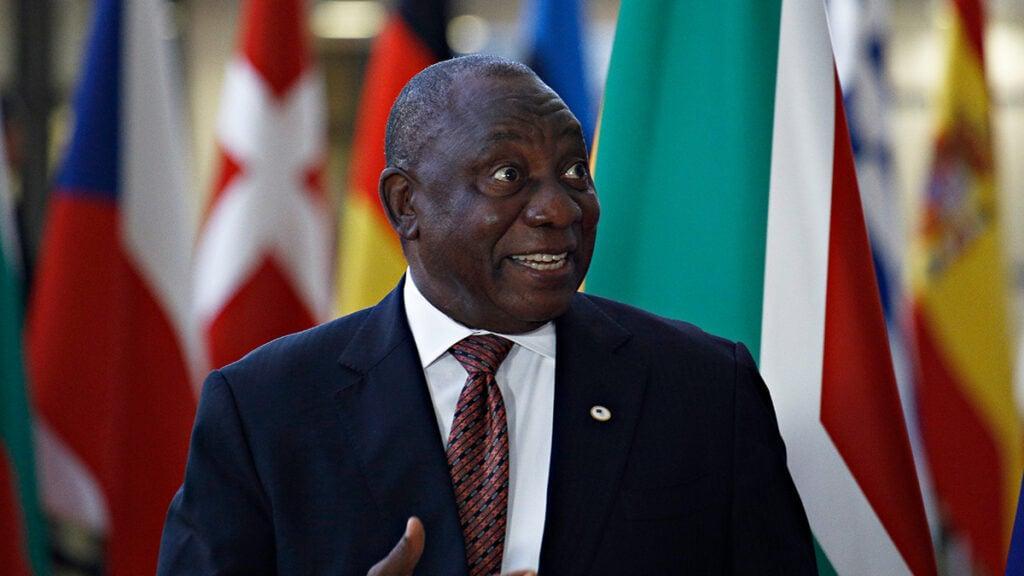Africa-Press – South-Africa. The lowering of the Reserve Bank’s inflation target promises to bring immense benefits for South Africa, including faster economic growth and substantially lower debt-servicing costs for the government.
These are two of South Africa’s largest challenges, with an economy that has grown at an annual average rate of less than 1% over the past decade and a debt burden exceeding 75% of GDP.
The Reserve Bank recently released a white paper outlining the benefits of lowering the inflation target to 3% from the current 3% to 6% range.
One of the key benefits is that a lower target will increase the competitiveness of South African exports globally by reducing the local cost of production.
In turn, a lower inflation target should also bolster the rand, making imports relatively cheaper and keeping prices stable.
Reserve Bank researchers argued in the paper that, in the long run, inflation in South Africa has proven to be far higher than that of the country’s major trading partners due to its wide target range.
“Ultimately, better control of inflation should achieve stronger macroeconomic outcomes for South Africa,” the researchers said.
“Inflation remains well above that of trading partners and the inflation premium in short-term and long-run interest rates is far too high, undermining investment.”
South Africa’s price level, and thus the cost of production, rises faster than that of the country’s trading partners. This makes its exports relatively more expensive and less competitive.
To compensate for this, the rand weakens to ensure that South African exports remain competitive. This results in a weaker currency, which significantly increases the cost of importing goods and pushes inflation higher.
The researchers estimate that a lower inflation target of 3% can result in additional GDP growth of over 0.25% per year within five years and 0.4% within a decade due to improved economic competitiveness.
These estimates are conservative, with the benefit set to be greater as lower interest rates ease the government’s debt-servicing costs and increase productive investment.
Government’s silver bullet
Finance Minister Enoch Godongwana
The greatest beneficiary of a lower inflation target is likely to be the government, which could potentially result in hundreds of billions of rands in savings from reduced debt-servicing costs.
South Africa’s government has accumulated a substantial debt load over the past fifteen years, totalling over R5 trillion and accounting for more than 75% of the country’s GDP.
Over the coming decade, approximately half of the government’s long-term domestic debt and foreign currency debt is expected to mature, totalling around R2.5 trillion.
“With the marginal borrowing costs higher, this is set to impose sustained funding pressure on the government and keep debt-servicing costs elevated,” the researchers said.
Lowering the inflation target presents an opportunity to alleviate some of this pressure and will result in significant fiscal savings, as new debt will benefit from a stronger rand, lower interest rates, and reduced inflation.
These savings will initially be relatively small, but will gather momentum over time and grow significantly to reduce debt-servicing costs by billions of rands and bring down the government’s debt load.
In the researchers’ baseline scenario, debt-servicing costs as a percentage of GDP are projected to decline from 5.4% in 2025 to 5.3% in 2030 and 4.8% in 2035.
This compares to debt-service costs that fall to 5.1% of GDP in 2029/30 and 4.2% of GDP in 2034/35 as the move to a lower inflation target reduces inflation, lowers short-term interest rates, strengthens the currency and supports a decline in real yields.
However, this will come with small short-term costs to the fiscus in the form of slightly slower GDP growth and elevated interest rates.
The researchers estimate that about R130 billion of nominal fiscal savings would be realised in the first five years, rising to R600 billion by the end of the decade, reflecting the compounding effect of achieving lower borrowing costs.
Almost 40% of historical government debt will benefit nearly instantaneously from lower inflation expectations.
Bigger fiscal savings could be achieved with a shift in the government’s borrowing strategy to focus on more short-term debt and inflation-linked bonds.
Historically, the government has relied on domestic long-term loans to meet its financing needs, with long-term domestic borrowing concentrated on fixed-rate instruments.
The graph below shows the impact of a lower inflation target on government debt as a share of GDP and the state’s debt-servicing costs.
For More News And Analysis About South-Africa Follow Africa-Press






